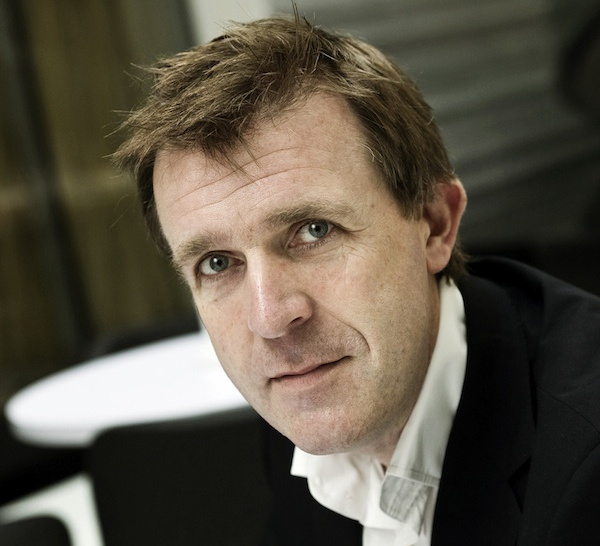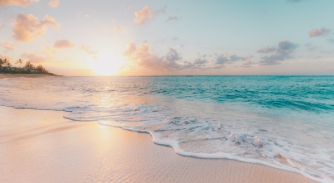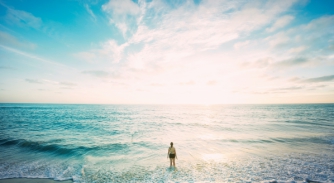“Let’s all get behind a new designers’ protocol”
Dickie Bannenberg calls for a standardised industry document that contains guiding sustainability principles for every yacht designer…

Recently, there was a news item about crisp packets from the 1960s washing up on English beaches. There’s no need to analyse the significance of this, apart from perhaps designers having a view on the packets’ graphics and fonts. In the same week, mudslides swept across the island of Ischia, a Swiss village was evacuated in advance of an expected landslide and Spain had record temperatures for May. Again.
Meanwhile, in our world, the price per GT of a new-build yacht is at an all-time high.
I thought I might draw upon my experience of having completed a course in Environmental Business Sustainability at Cambridge earlier this year.
I am indebted to Henk de Vries for allowing me to use Feadship as a case study and to Charlotte van de Kerk, the extremely able sustainability programme manager at the yard. My high pass is dedicated to you!
Among some 1,500 classmates spread across the globe, I kept my yacht designer head just slightly below the parapet. Macassar Ebony and 16v diesels didn’t sit that well among specialists in sustainable cottons, nudge behavioural experts and circular shopping advocates. But there was a huge amount to take away, even among the jargon that tends to frame a lot of the work. Double materiality matrix anyone?
The Water Revolution Foundation is doing important work. As much as anyone, yachting needs change agents. I think the Chairman of The Superyacht Group, Martin Redmayne, experienced that first-hand when dealing with protestors in Amsterdam [at The Superyacht Forum 2022 – see The Superyacht New Build Report issue 216]. The excellent YETI [Yacht Environmental Transparency Index] acronym is a very welcome tool and metric. I was pleased to be able to refer to it in my forums with classmates. Lateral Naval Architects and Oceanco have developed the ETP (energy transition platform). Lürssen and Feadship are leading the way with hydrogen power.
More than 80 per cent of the environmental impact of a product is determined at the design stage. You could say that sustainability is the ultimate design brief.
So I would like to propose that partners of the WRF collaborate to stand behind a designers’ protocol that sets out, at high-level, issues for clients to consider when they start the journey of planning a new build – cross-sector collaboration, to use the lingo, which sets aside the race to secure a shiny Neptune in favour of a roadmap with some collective functions and mutual accountabilities.
It should be a document standardised for all. Not a Bannenberg & Rowell version or a Winch version or an Espen version. One version, under the banner of the WRF. The guiding principles might include:
• Efficiency
• Durability
• Longevity
• Dematerialisation
• Effectiveness
• Substitution
• Mitigation
• Adaptation
Of course, the end users in our industry are about as far removed from the normal consumer as can possibly be. And it’s a fair bet that any sense of being restricted in their choices is not what they had in mind when spending tens of millions of euros on a bespoke creation. A hand-built Boeing 747, as my Dad used to say.
There are some different approaches that are explicitly connected to the sustainability agenda. These include:
• Biomimicry (I recall Feadship is on this already )
• Inclusive design
• Life-cycle thinking
• Systems thinking and integrative design
• Appropriate or intermediate technology
• The magnificently acronymmed BATNEEC (best available technology not entailing excessive cost).
Historically, this is not applicable to the yachting industry, I would suggest …
But participatory or cooperative design is, I think, the key here.
The ambiguous and often vague use of the term ‘sustainability’, the interconnected nature of the issues
and the sheer scale of the challenge all point towards starting simply and not over-reaching.
Points to raise in the new protocol might include:
• Building to a Classification Society environmental notation as standard. (Disclosure: my oldest friend is the senior independent director on the Lloyd’s Register Board. Shall we set that hare running to overhaul and strengthen those requirements?).
• Propulsion. Of course.
• Construction materials. The environmental footprint of more expensive hydropower aluminium. A recent Feadship build used it, saving the equivalent of 830 tons of CO2, or 30,000 trees to use a different metric. Incidentally, it’s six times cheaper to buy ‘green’ aluminium than to offset the difference with carbon credits.
• Teak. We designers know it’s getting harder to source. Obviously so do the shipyards. In 2015, it cost 12,000-13,000 euros per cubic metre, clean cut. In 2021, the figure was 23,000 euros. Earlier this year, it was 33,000 euros. For legally sourced teak. I refer you to the word ‘substitution’.
• Aircon. Do we need to chill the air over an exterior dining table? Really?
• Interior materials. Change the narrative of ‘rarest is best’.
The list could be as long or as short as we choose to make it. It might well need buy-in from shipyards. But the point is we should collectively raise the choices and issues with one voice to our clients.
The last generation to know a stable climate with seasonal cycles and familiar species has already been
born.
Profile links
NEW: Sign up for SuperyachtNewsweek!
Get the latest weekly news, in-depth reports, intelligence, and strategic insights, delivered directly from The Superyacht Group's editors and market analysts.
Stay at the forefront of the superyacht industry with SuperyachtNewsweek
Click here to become part of The Superyacht Group community, and join us in our mission to make this industry accessible to all, and prosperous for the long-term. We are offering access to the superyacht industry’s most comprehensive and longstanding archive of business-critical information, as well as a comprehensive, real-time superyacht fleet database, for just £10 per month, because we are One Industry with One Mission. Sign up here.
Related news

TISG outlines ESG commitments
The Italian Sea Group details its diverse ESG strategy to reduce current CO2 emissions as well as offset those from 2022
Business

Turbulence ahead
As the landmark ‘greenwashing’ case against the Dutch air carrier proceeds to full trial, the superyacht industry should take note
Opinion

“If we don’t embrace change, we’ll disappear. It’s that simple.”
Dr Vienna Eleuteri says the superyacht industry must seize the ‘fantastic opportunity’ to become involved with climate contribution programmes
Business

It’s on all of us to strive for a sustainable future
The key steps we can take towards developing a more responsible superyacht industry.
Owner
NEW: Sign up for
SuperyachtNewsweek!
Get the latest weekly news, in-depth reports, intelligence, and strategic insights, delivered directly from The Superyacht Group's editors and market analysts.
Stay at the forefront of the superyacht industry with SuperyachtNewsweek



